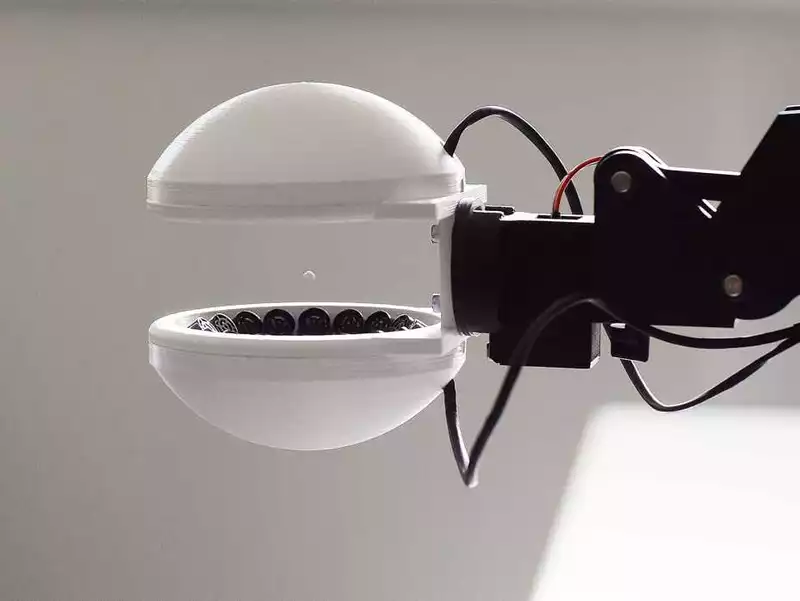Scientists at ETH Zurich have developed a mechanism for robots to grab objects without touching them. Although it sounds as if the robot is using the Force, this is simply acoustic levitation, a technique that uses ultrasound to lift objects into the air.
Unlike conventional robotic hands, this new gripless grip can be used to manipulate fragile objects that need to be grasped without touching.
Developed by Marcel Schuck, a pioneering researcher at ETH Zurich, the robotic hand has no fingers, tweezers, or other touching elements. At the end of the arm are two white hemispheres.
The technology was first demonstrated in the 1940s, but major developments occurred only in the last century, when scientists began to develop ways to manipulate small biological objects, such as single cells, and larger objects.
However, the invention by Schuck is one of the first practical applications that could have real-world applications in environments ranging from engineering labs to operating rooms, medical labs, and manufacturing facilities where small pieces can be easily damaged or contaminated by touch.
According to Schuck, "Gears [used in watchmaking] are first coated with lubricant, and then the thickness of this lubricant layer is measured. Even the faintest touch can damage the thin film of lubricant." So this makes it a perfect application. The same applies to semiconductor circumferential operations. Instead of using hands or robots, this machine would allow 100% clean and gentle manipulation of fragile silicon.
The benefits of a robot that can grip objects without touching them are not limited to fragile or uncontaminated objects. The software that powers the gripper can grab objects of any shape by analyzing the 3D contours of the object. Conventional touch robots require a gripper specifically designed for the shape of the object. In this case, however, "the acoustic gripper eliminates the need for a large set of expensive high-precision grippers," says the Swiss technical institute. In fact, with this method, even the arm does not need to be moved with complete precision.
While it sounds like magic that will never happen, Schuck believes the technology will leave the ETH Zurich lab and be ready for actual production by next spring.










Comments